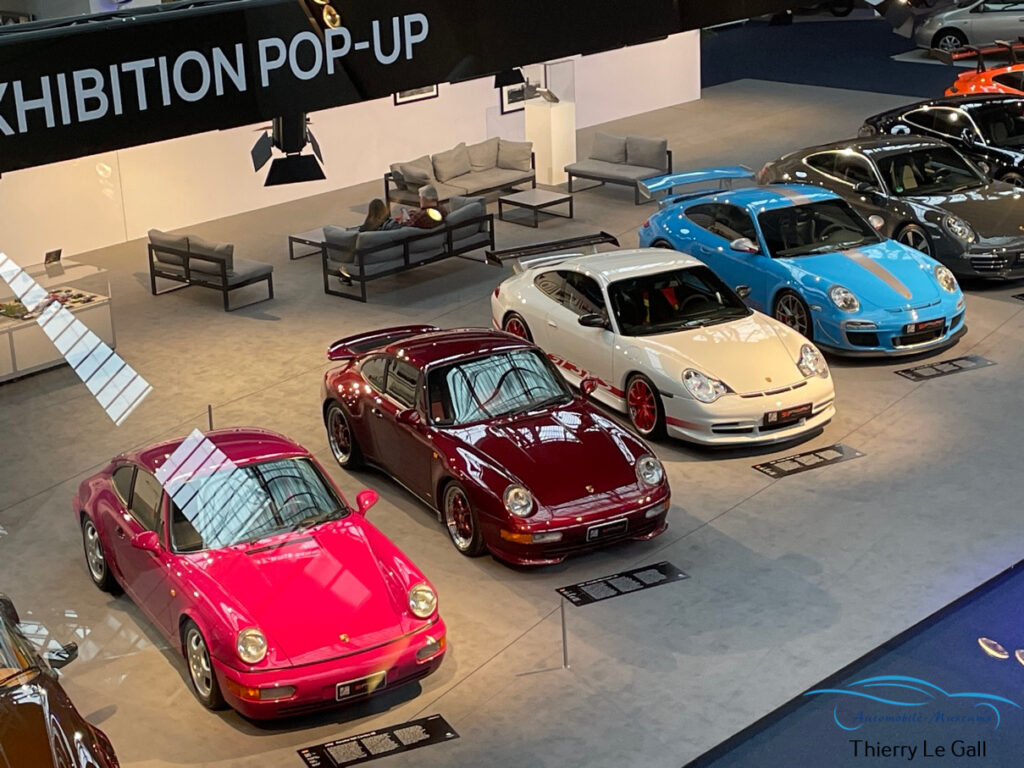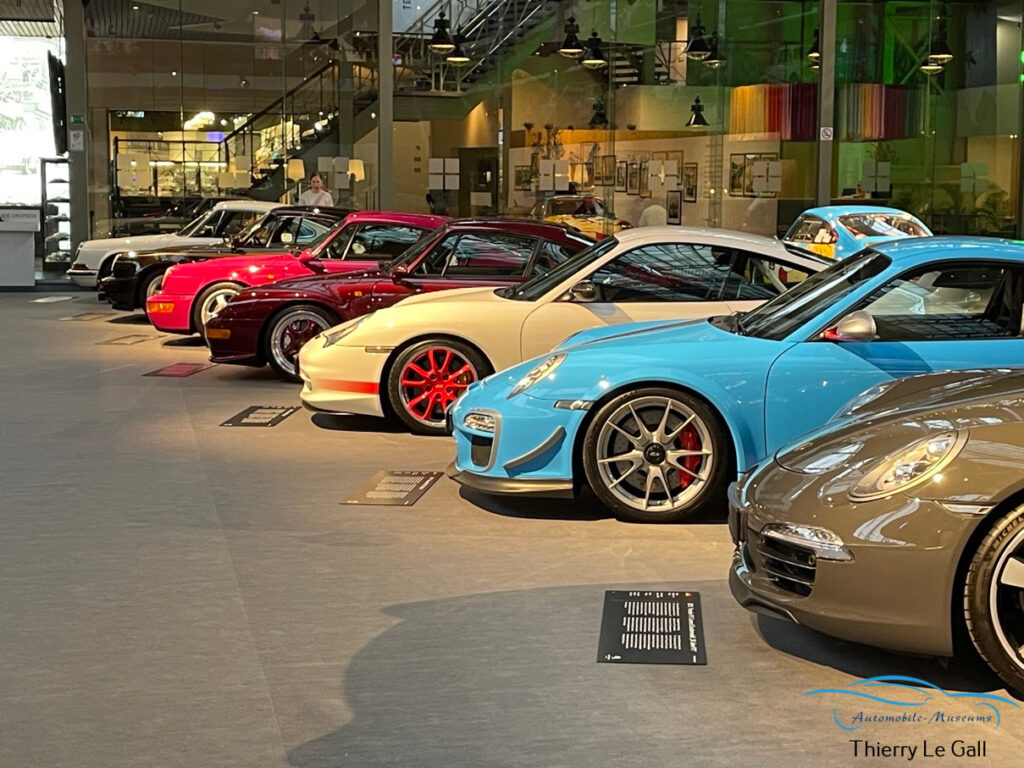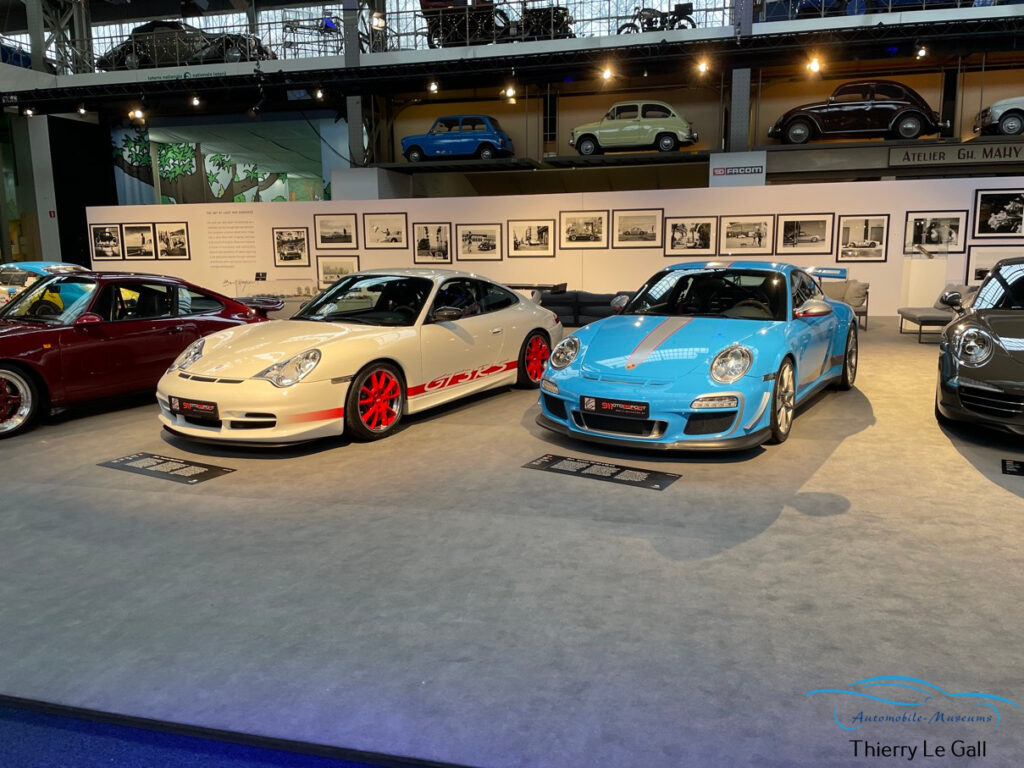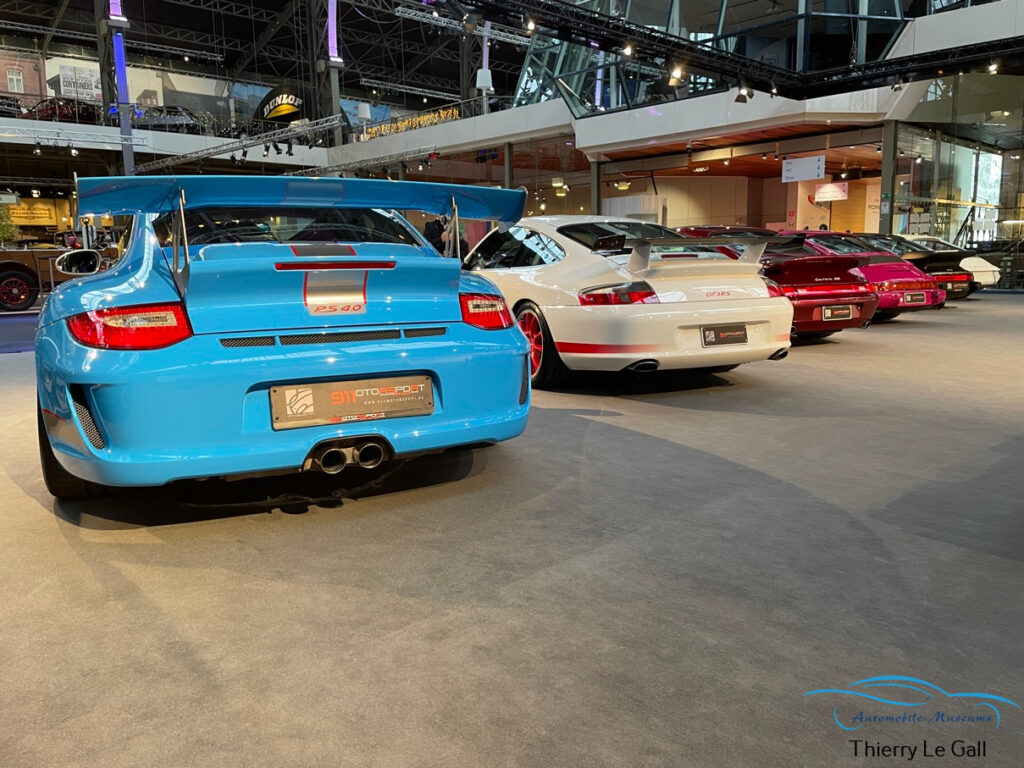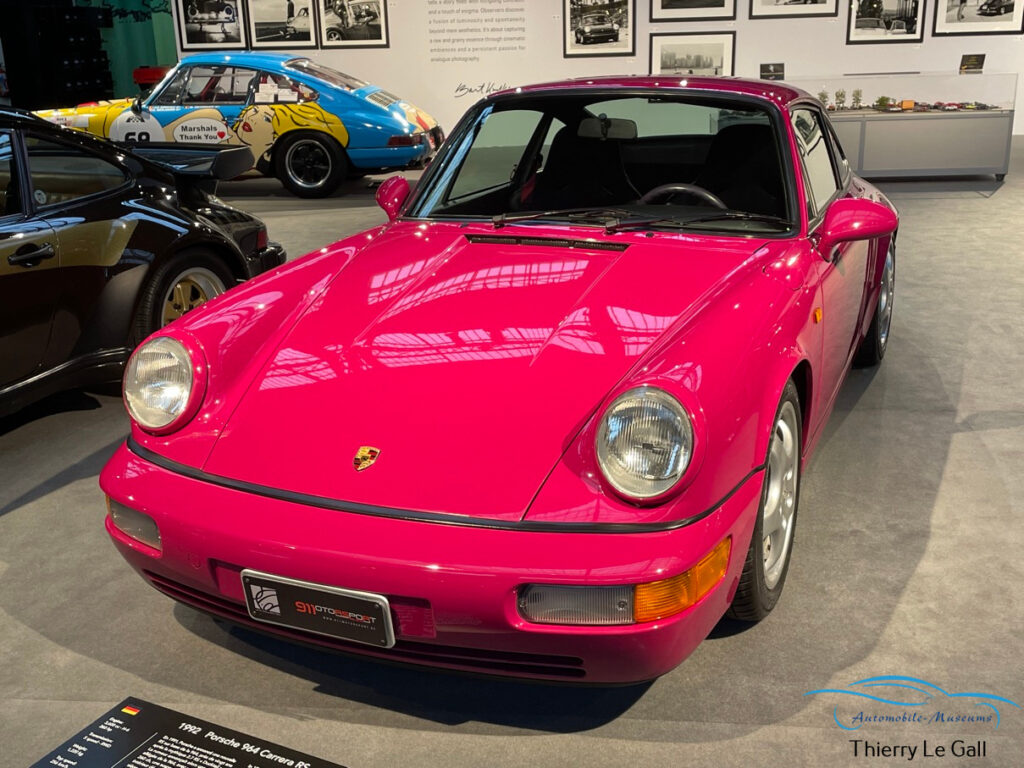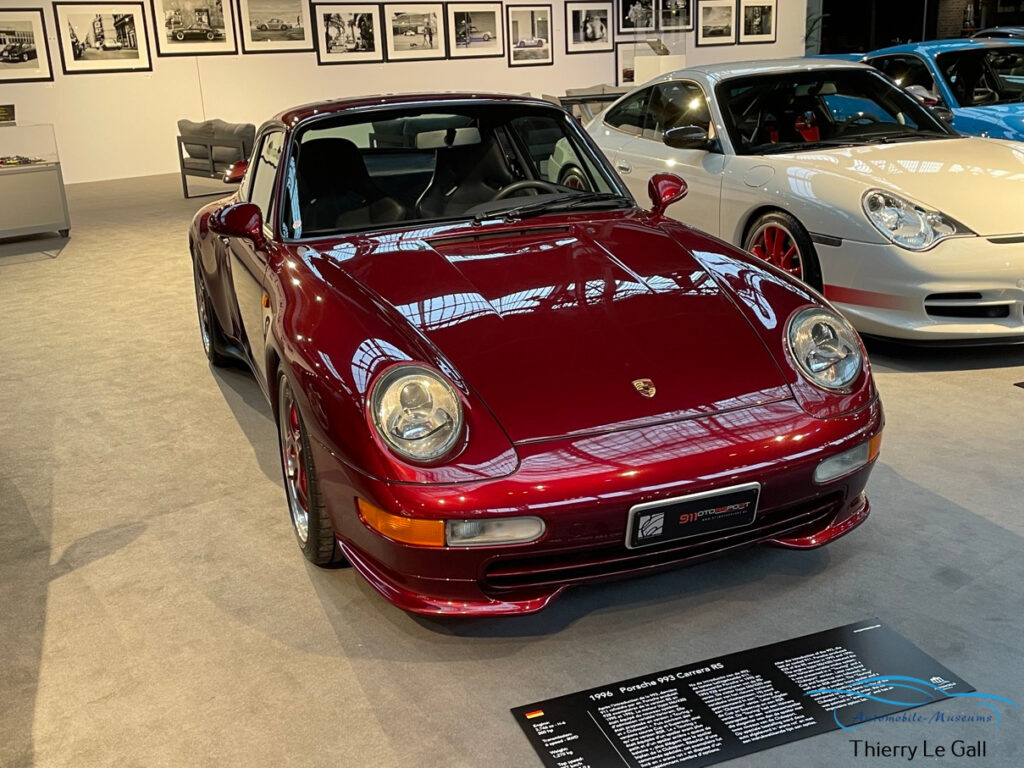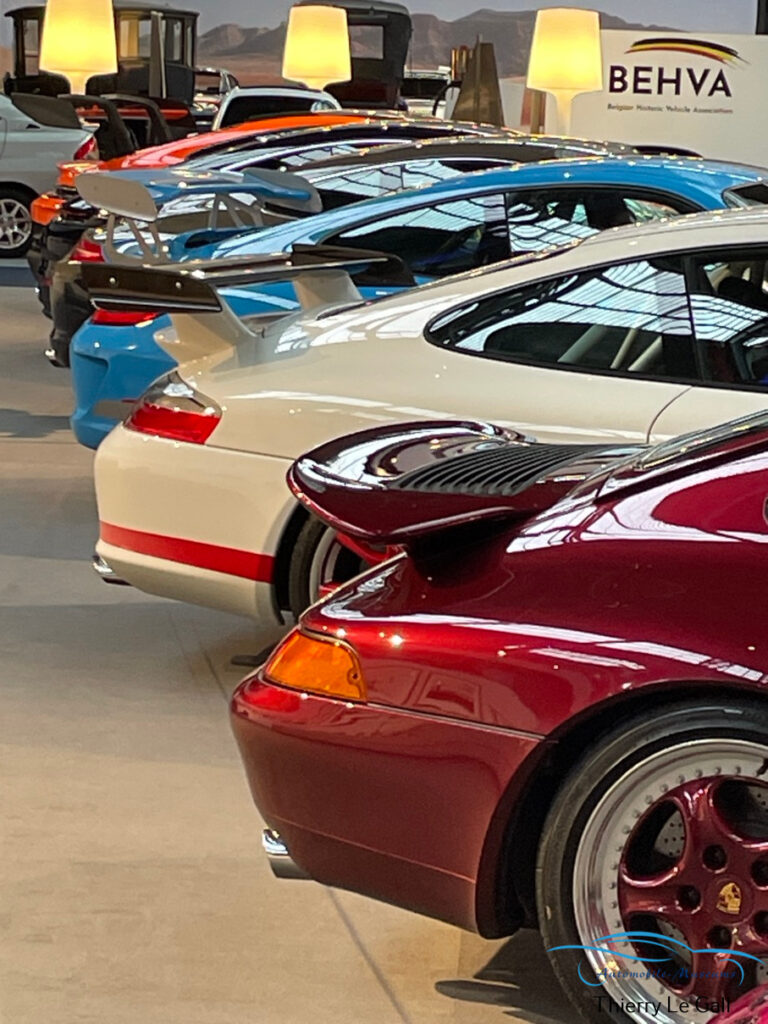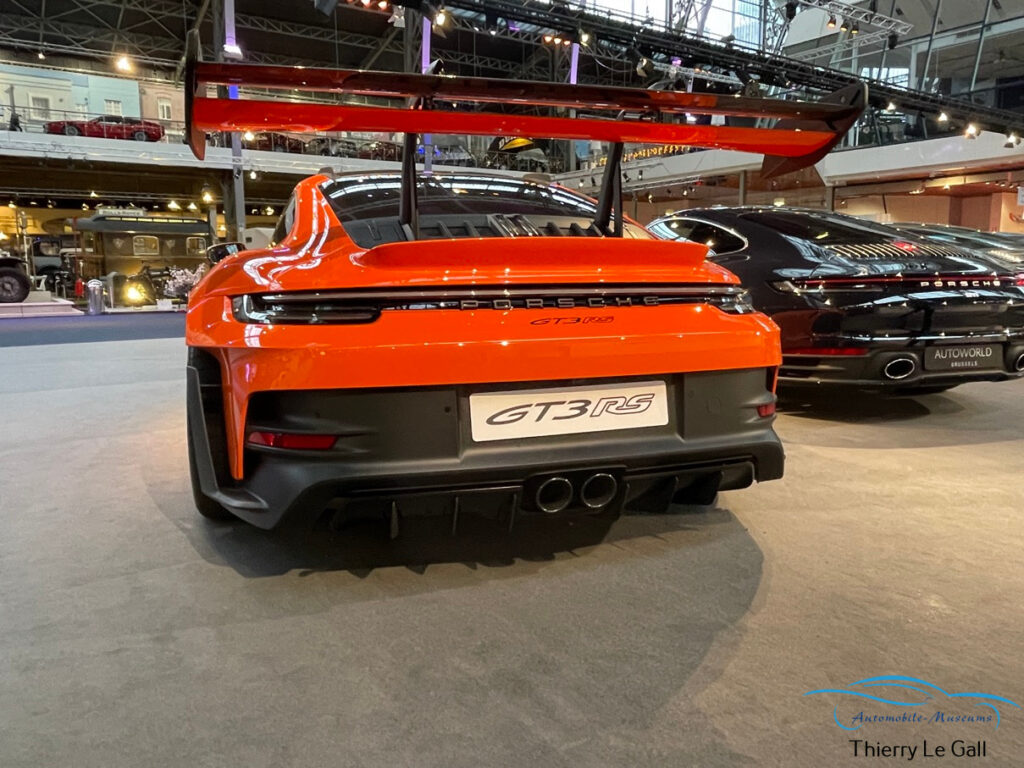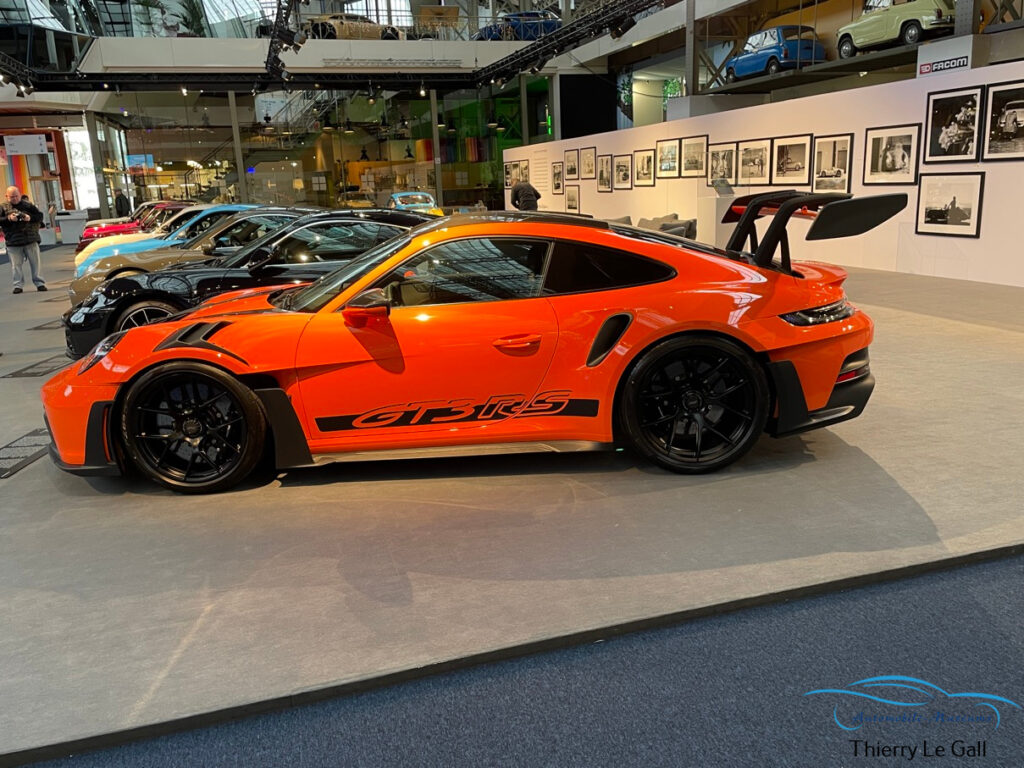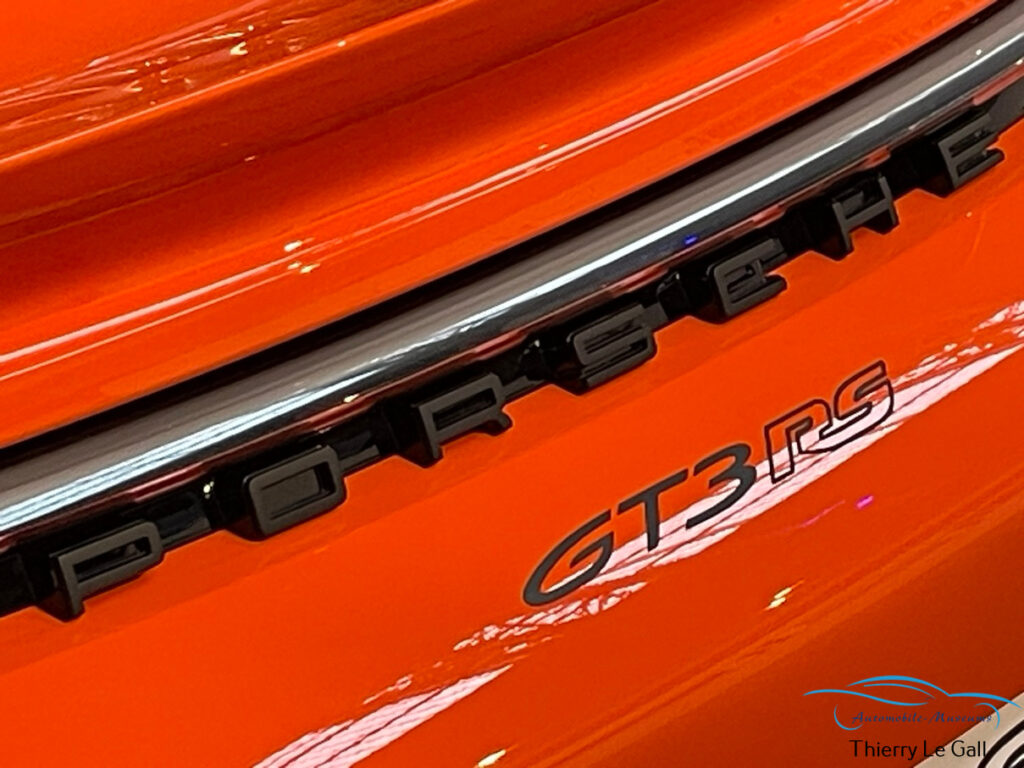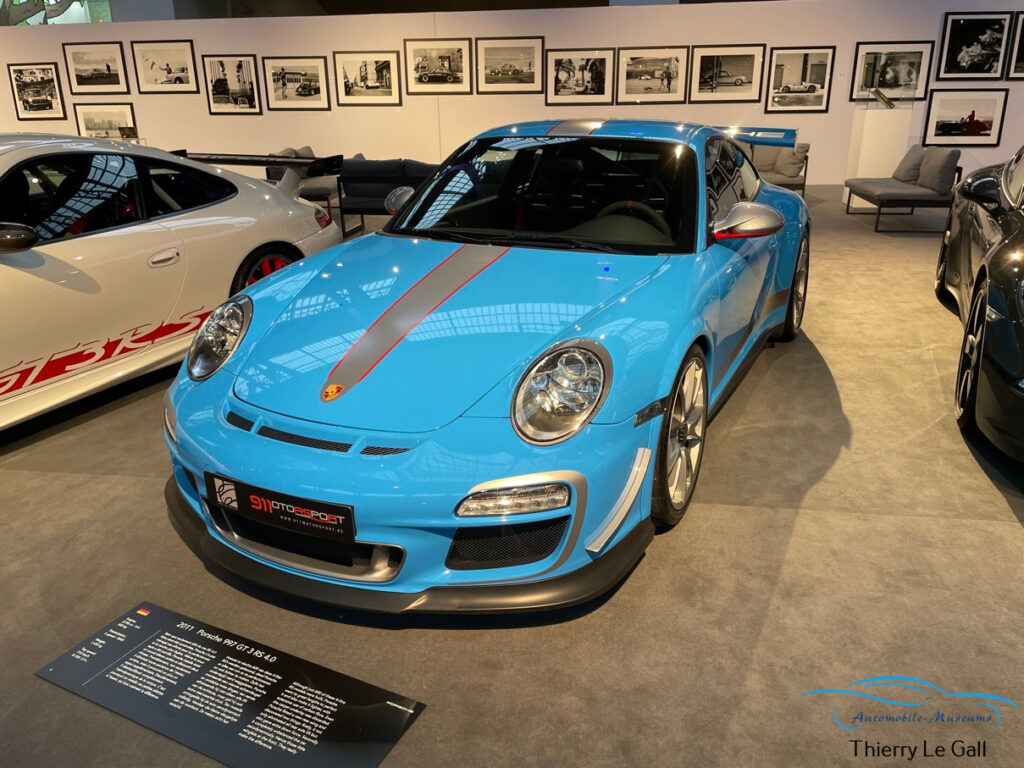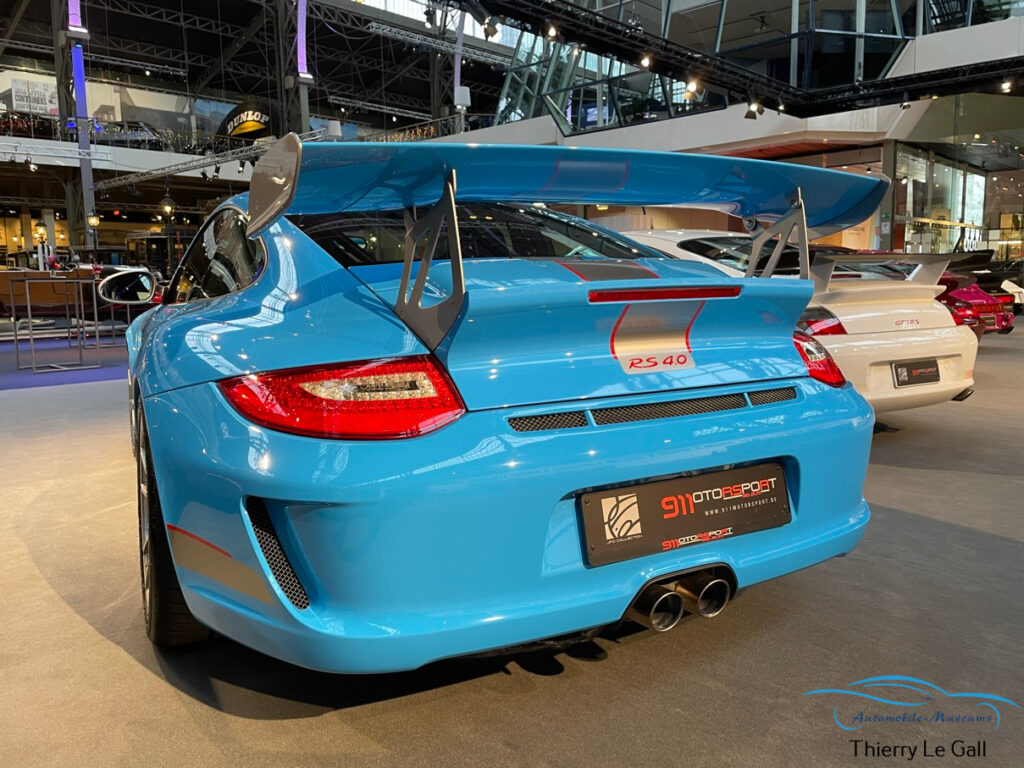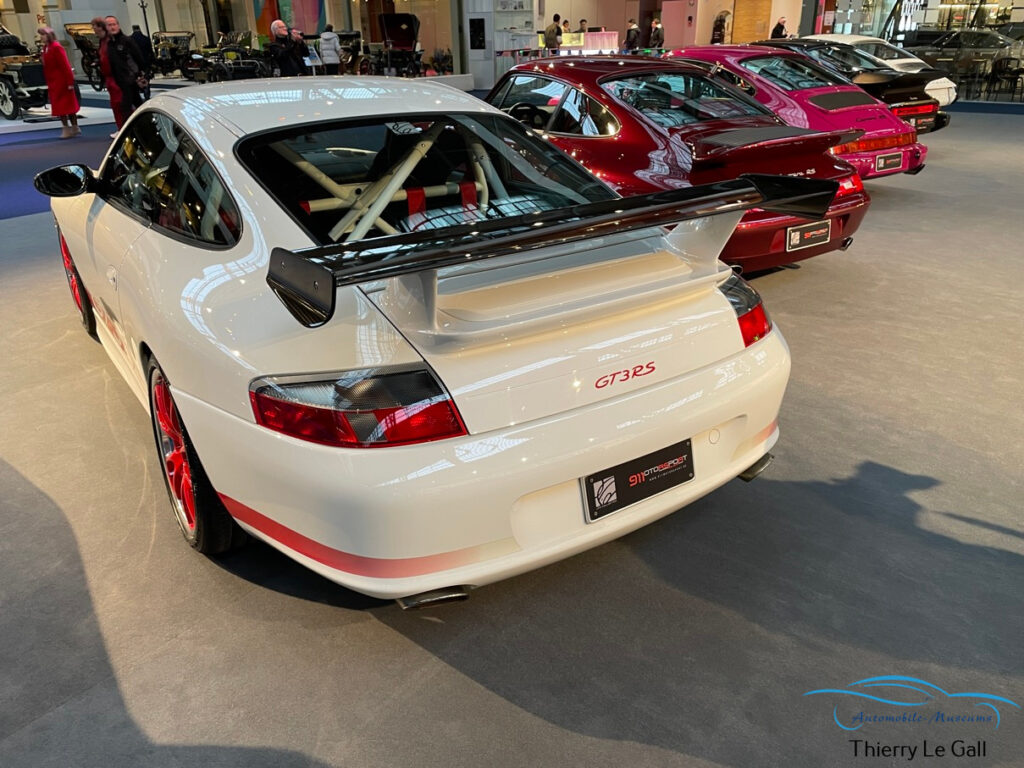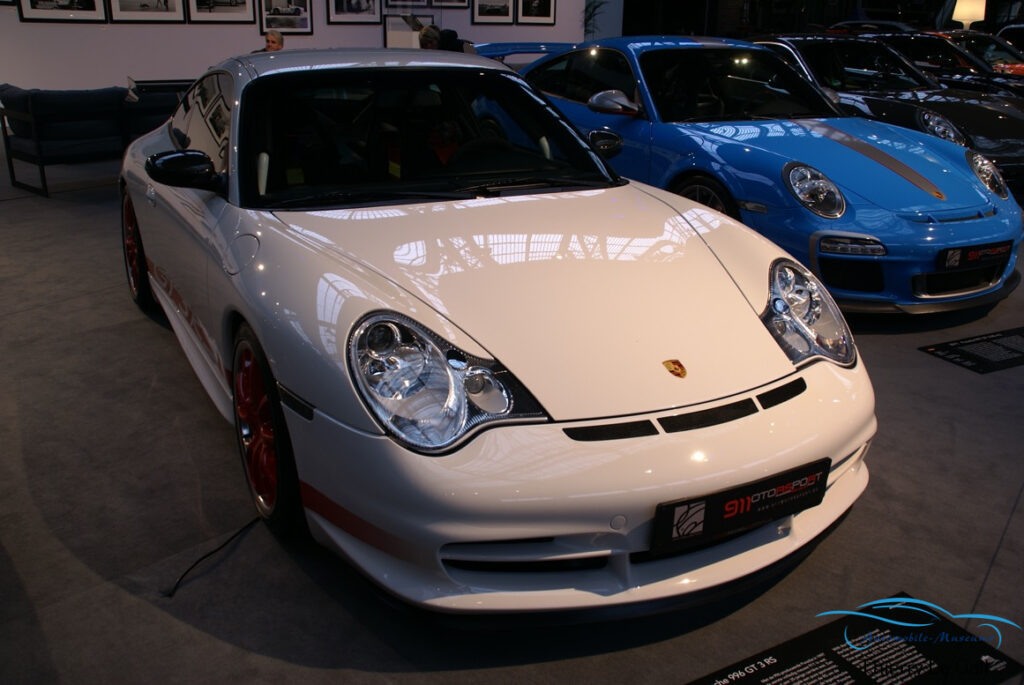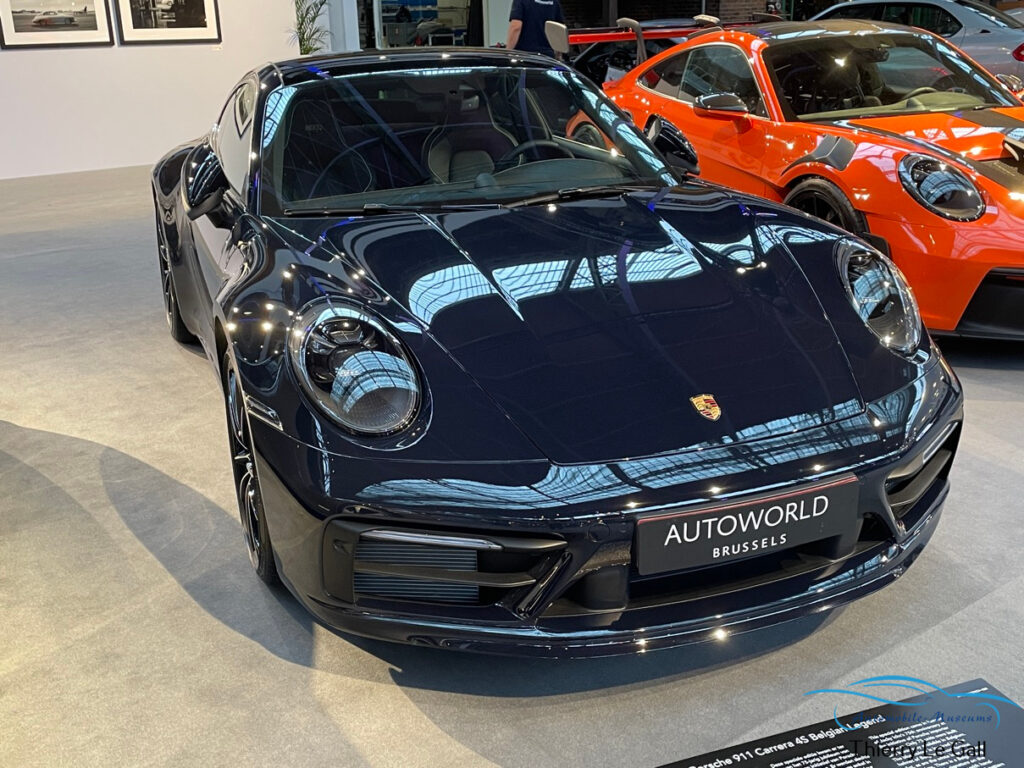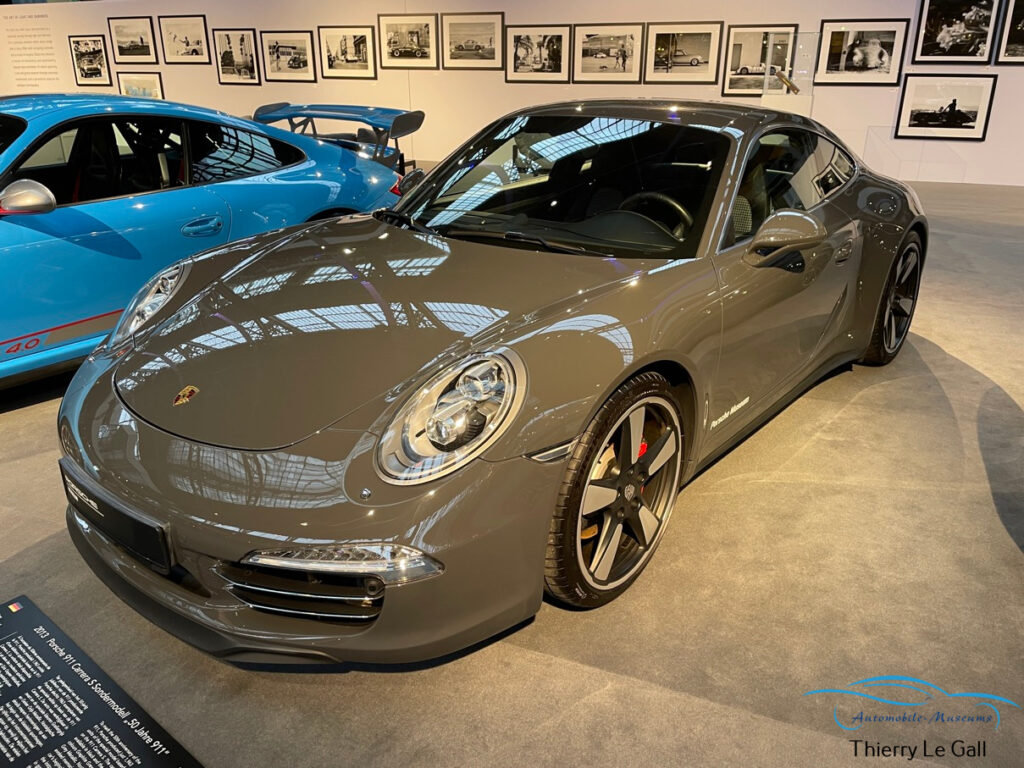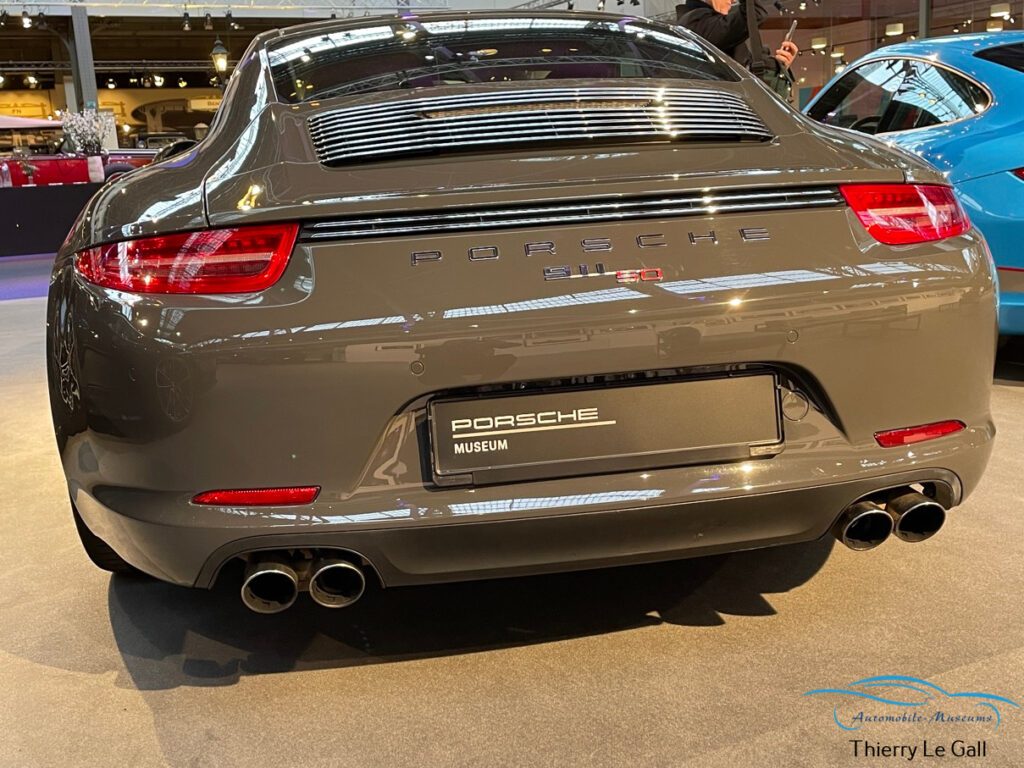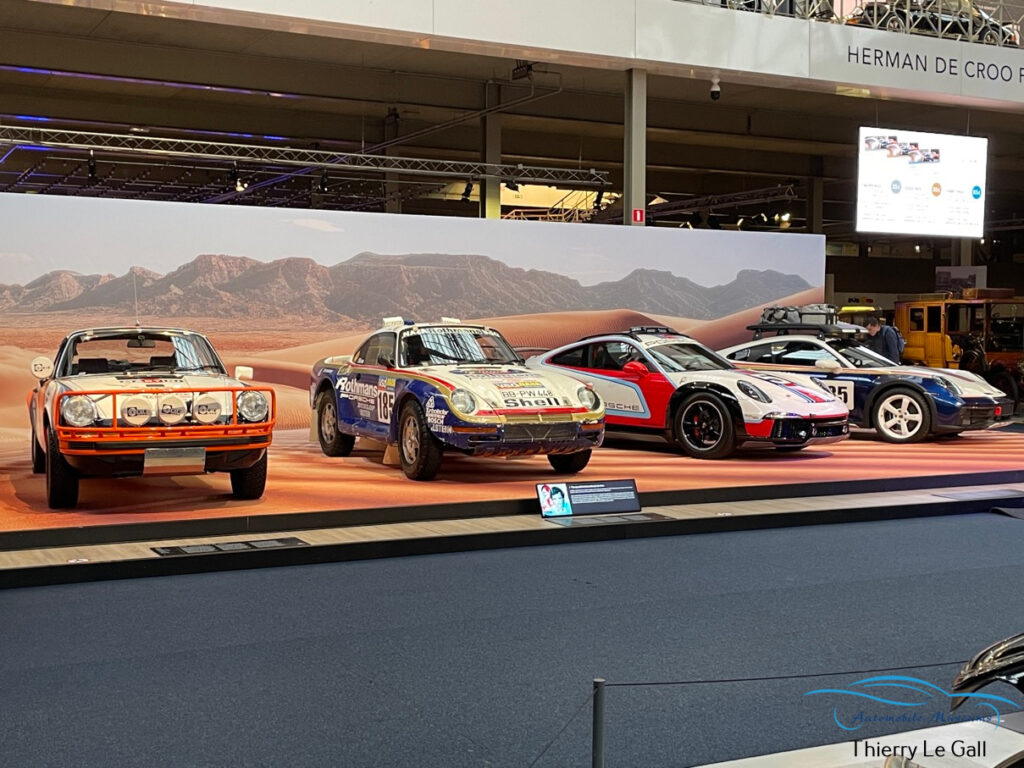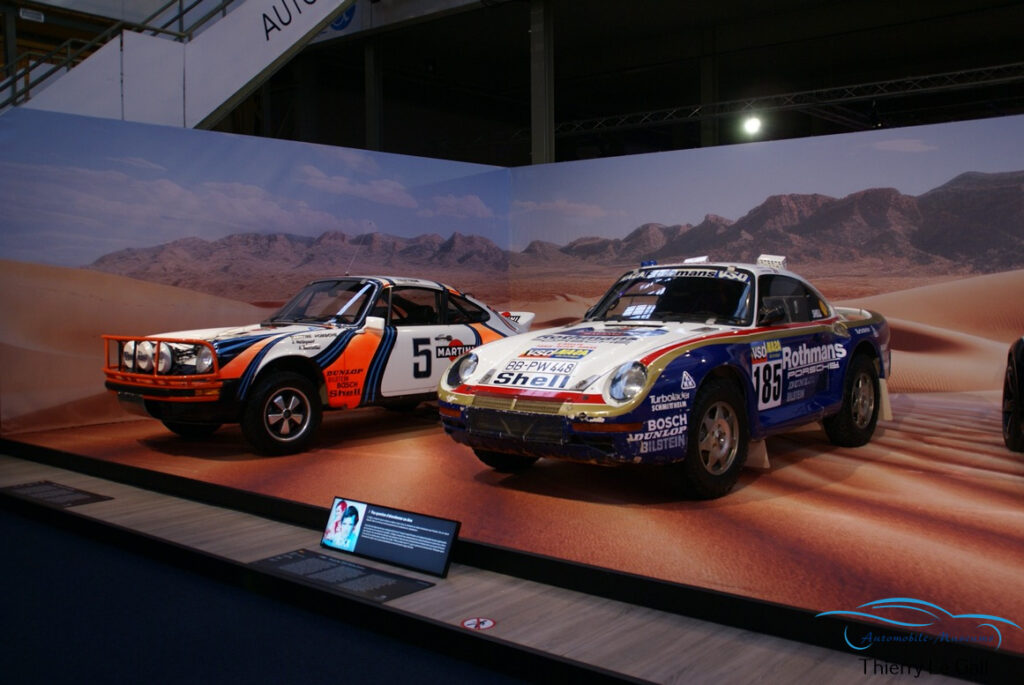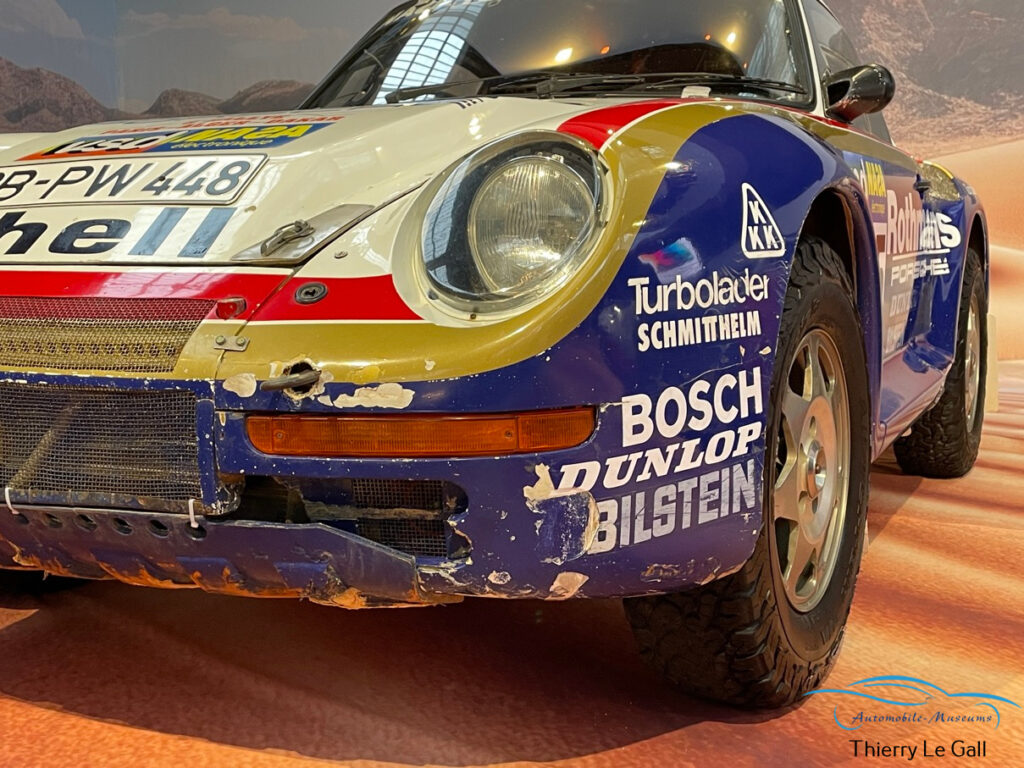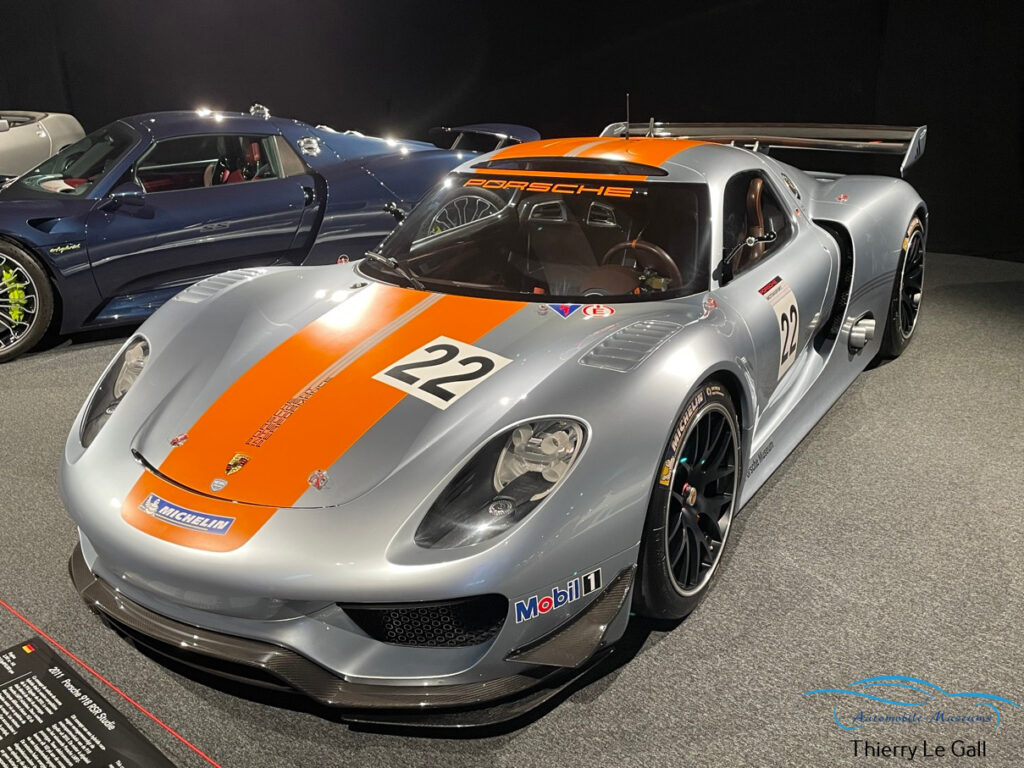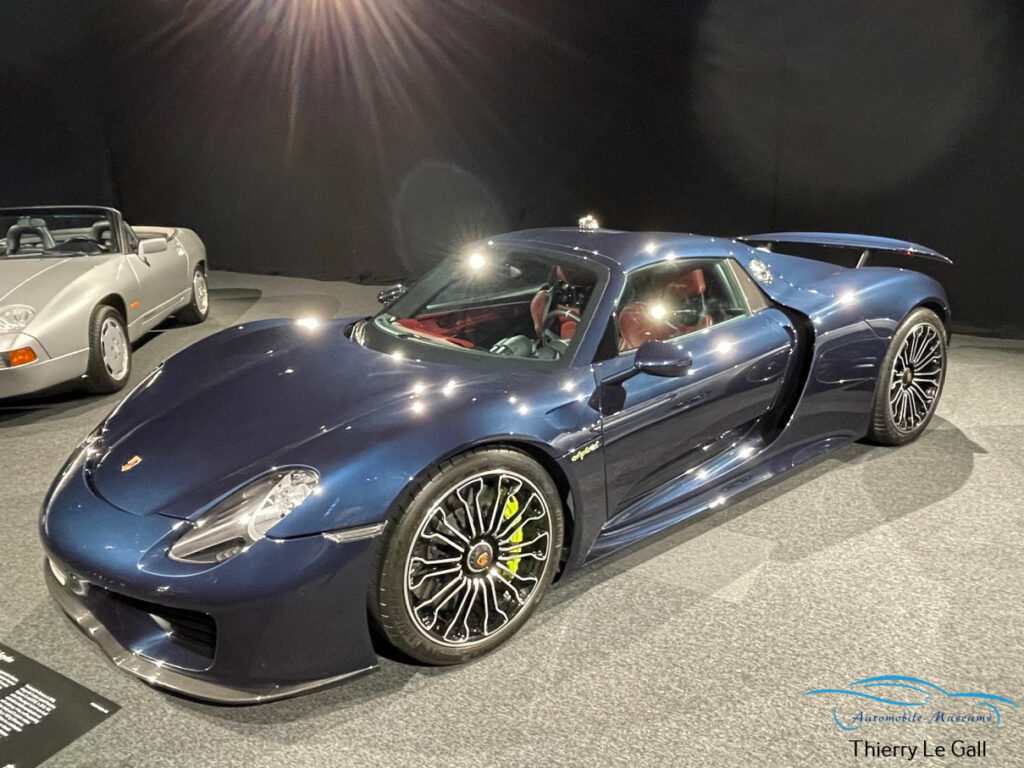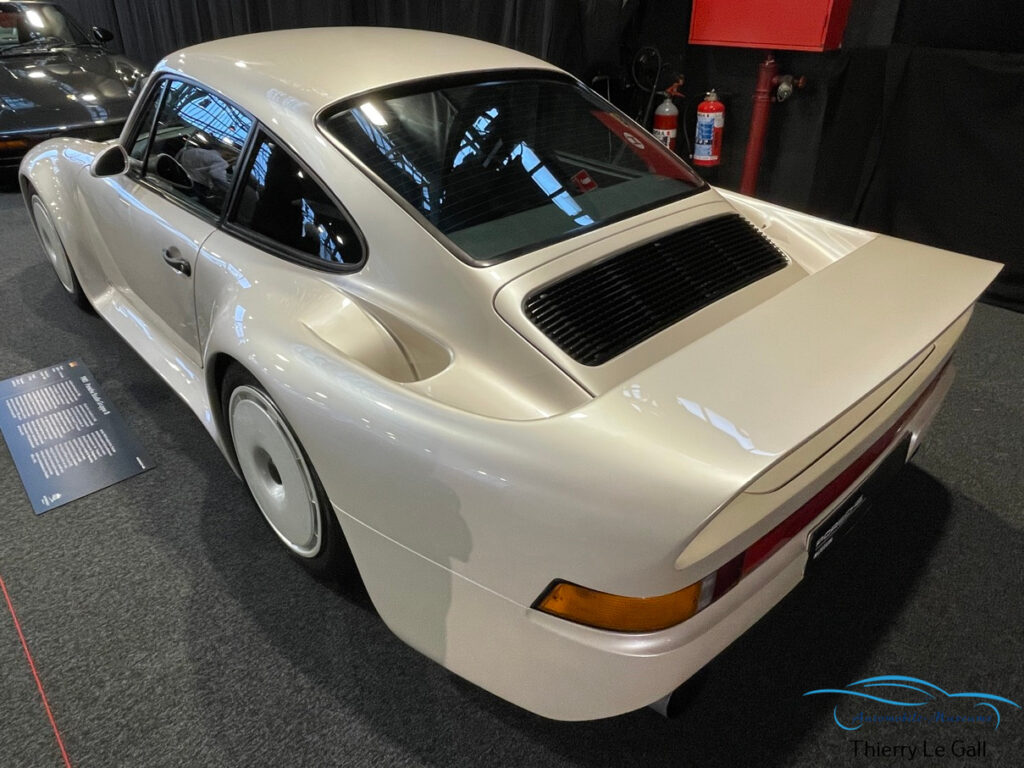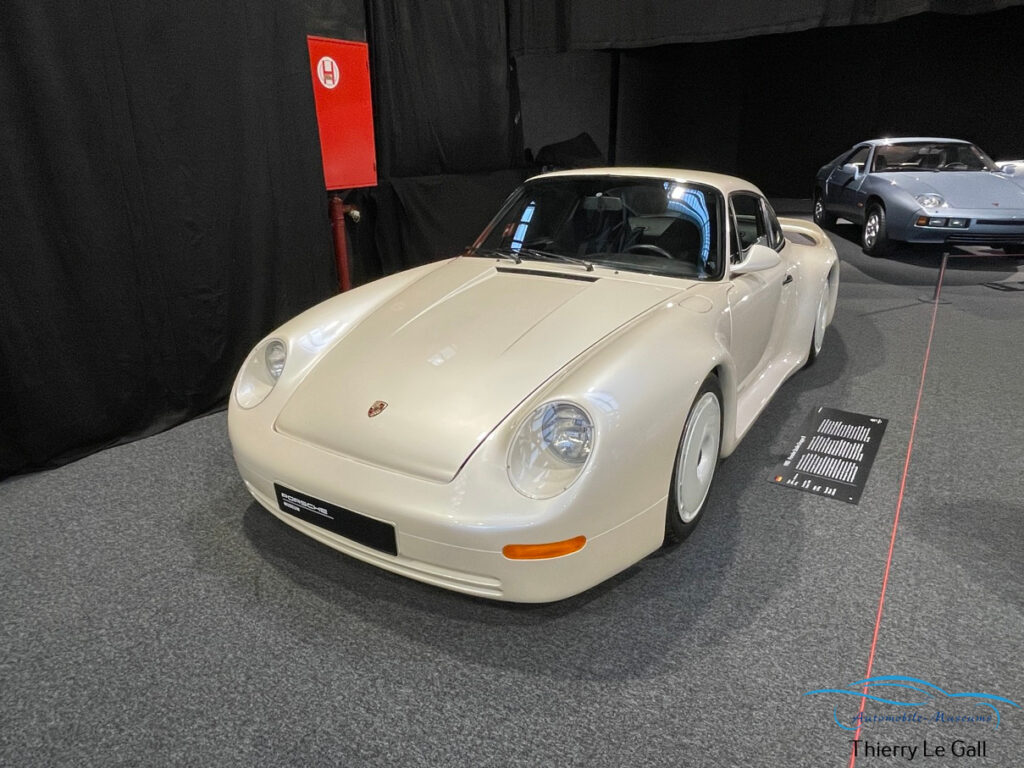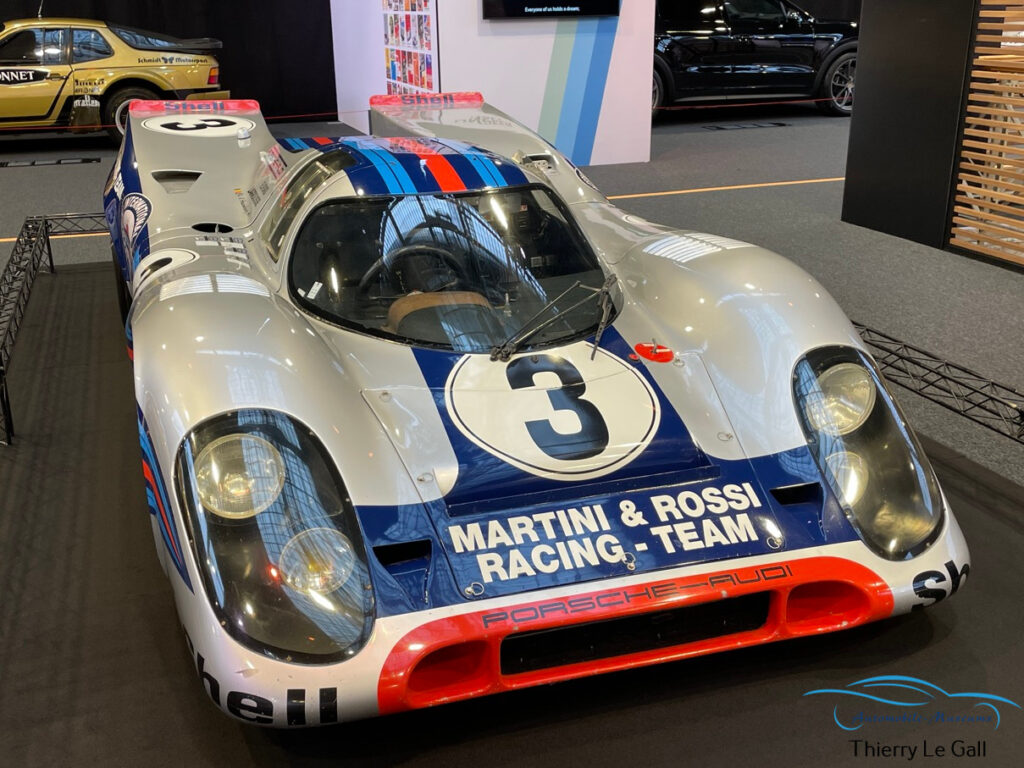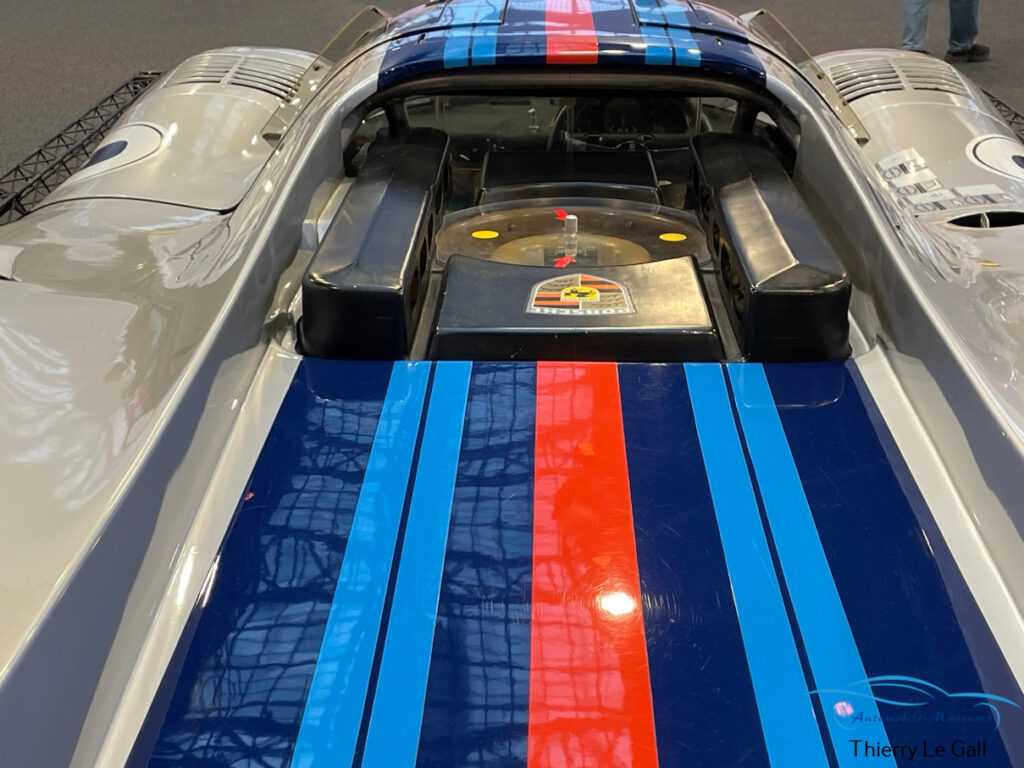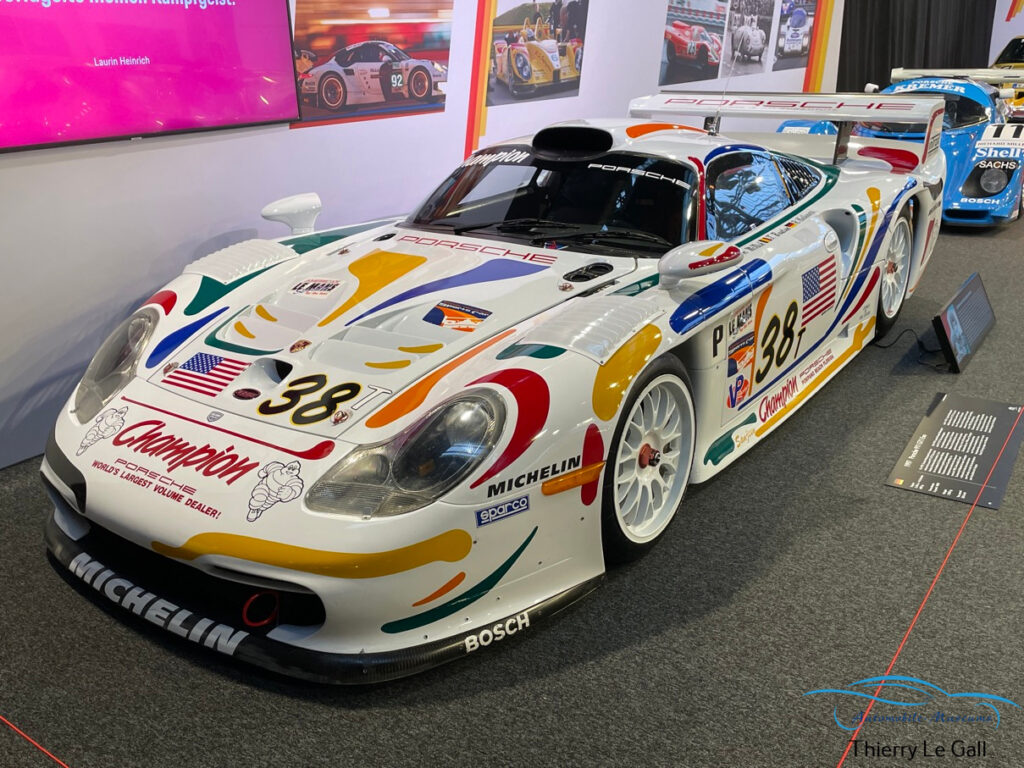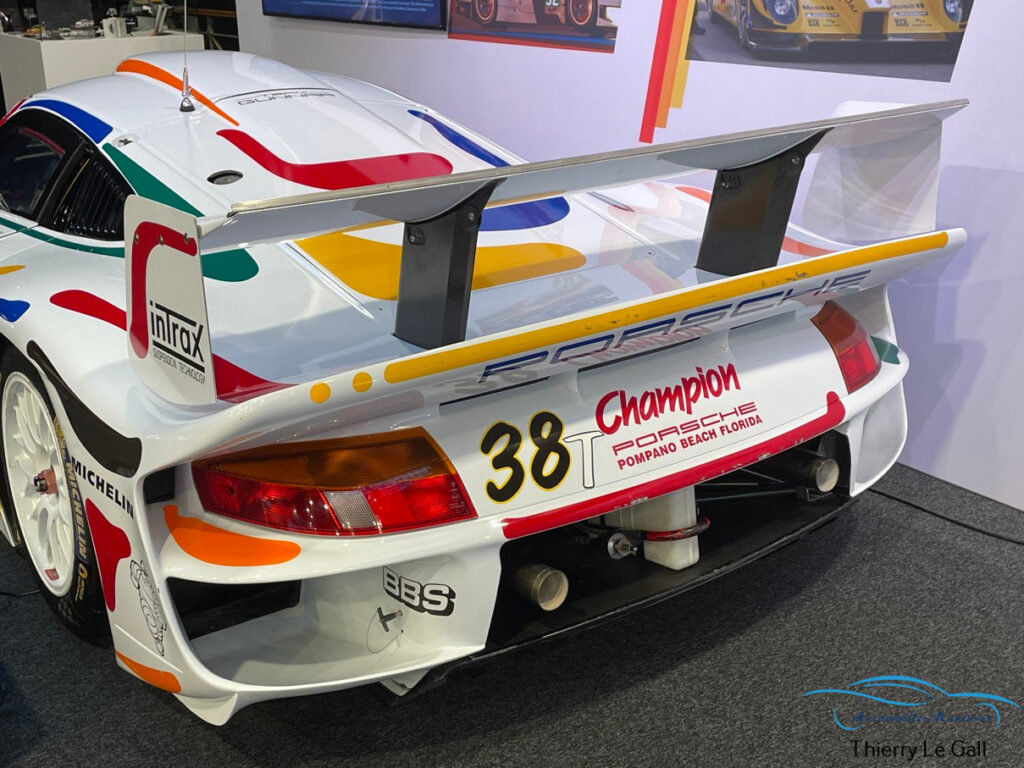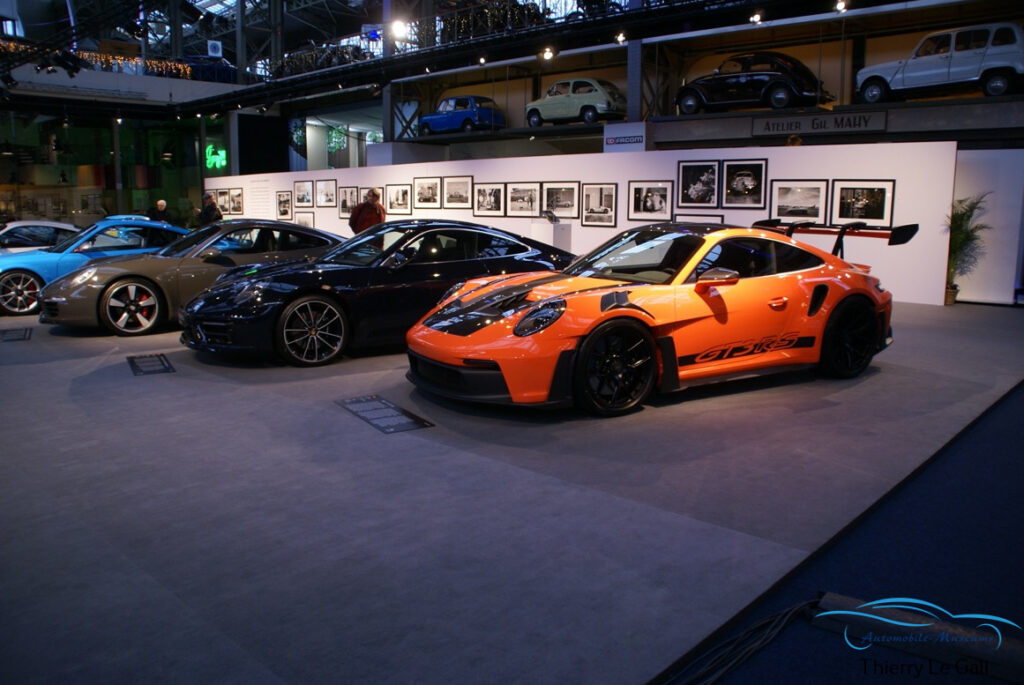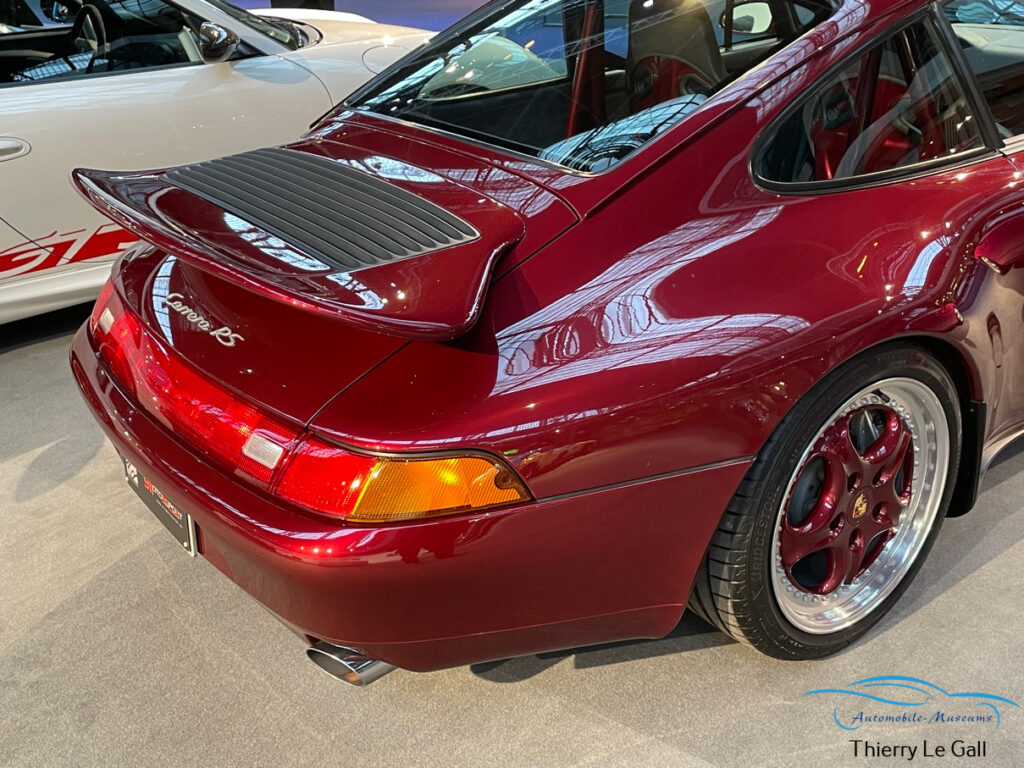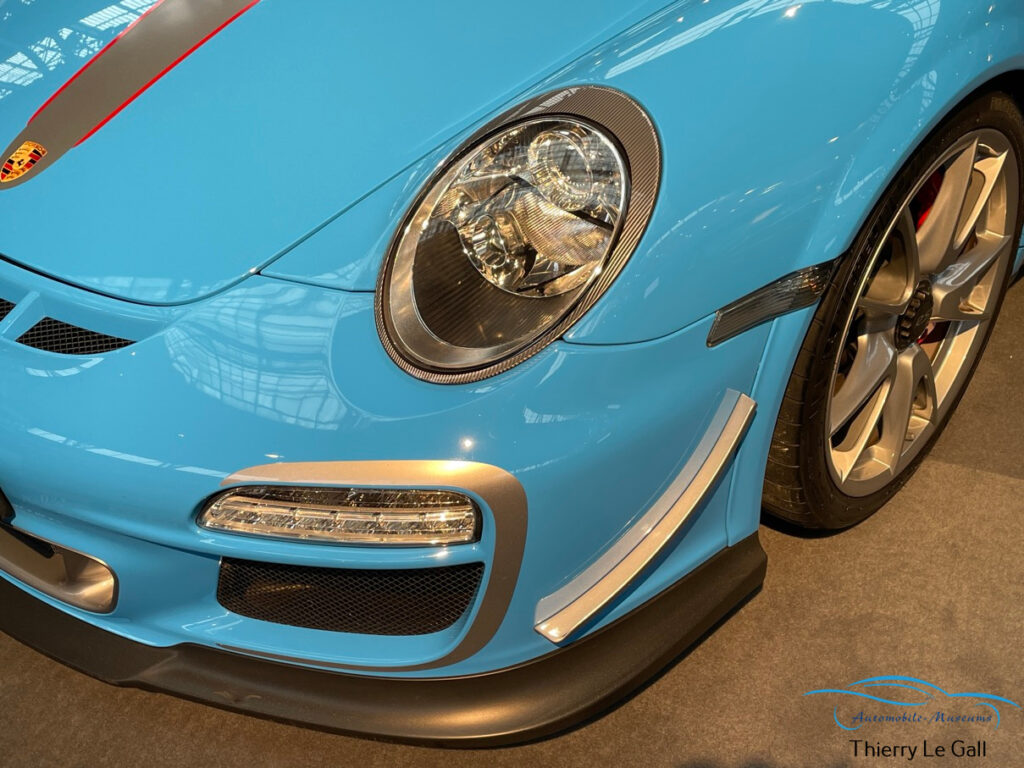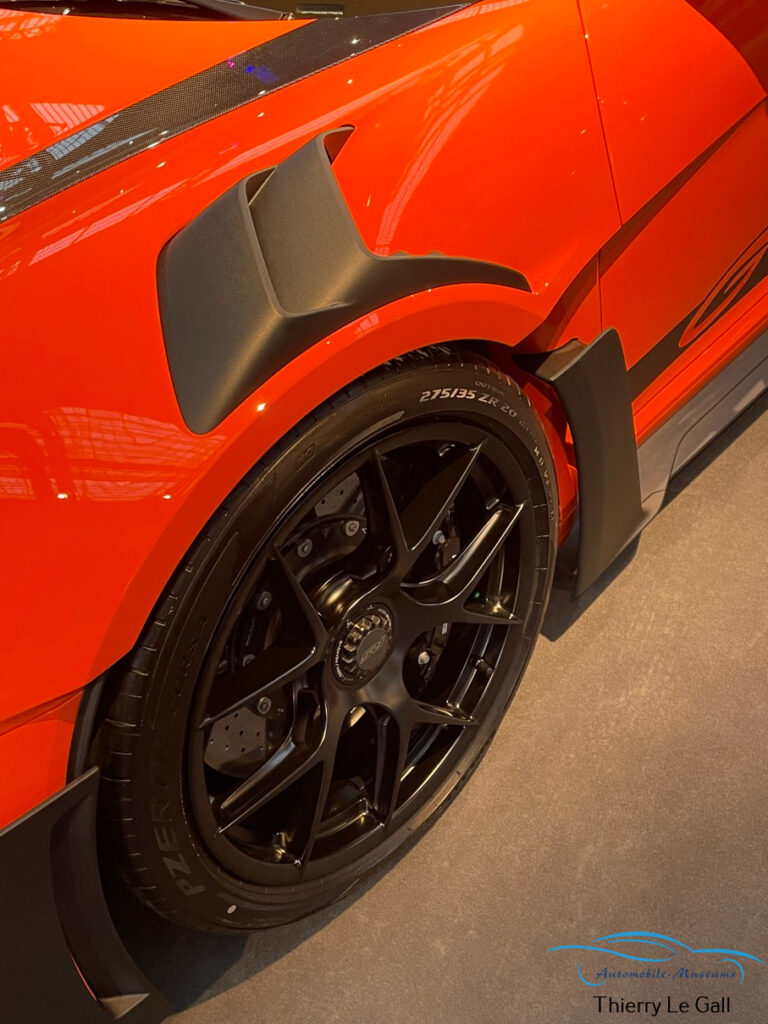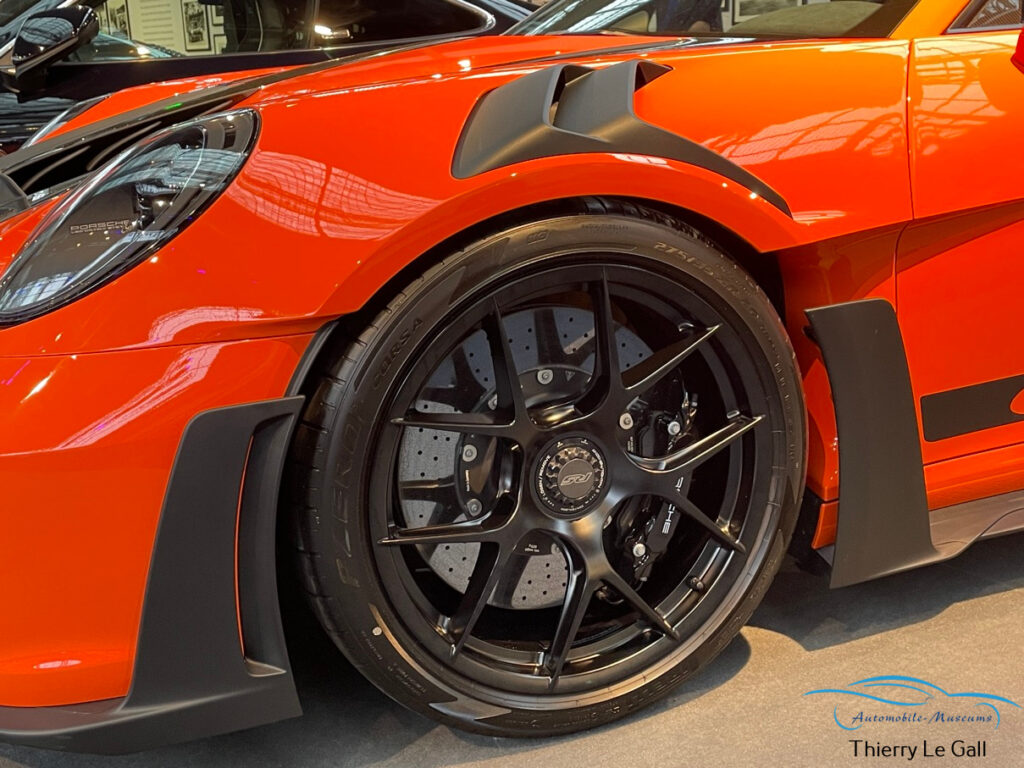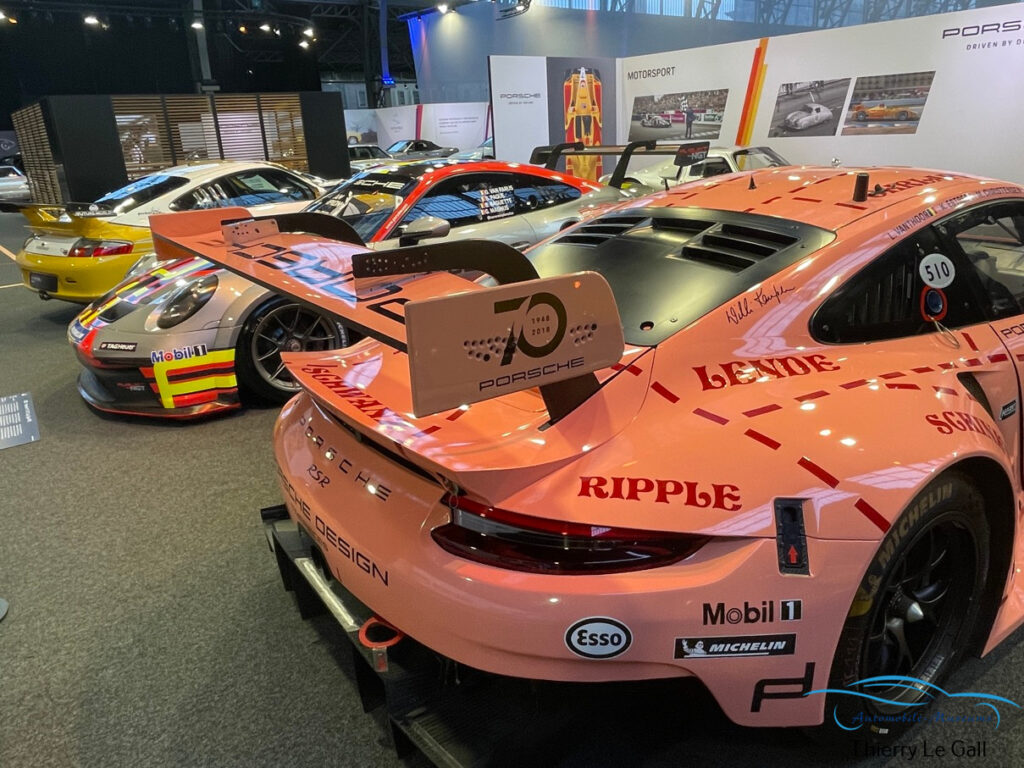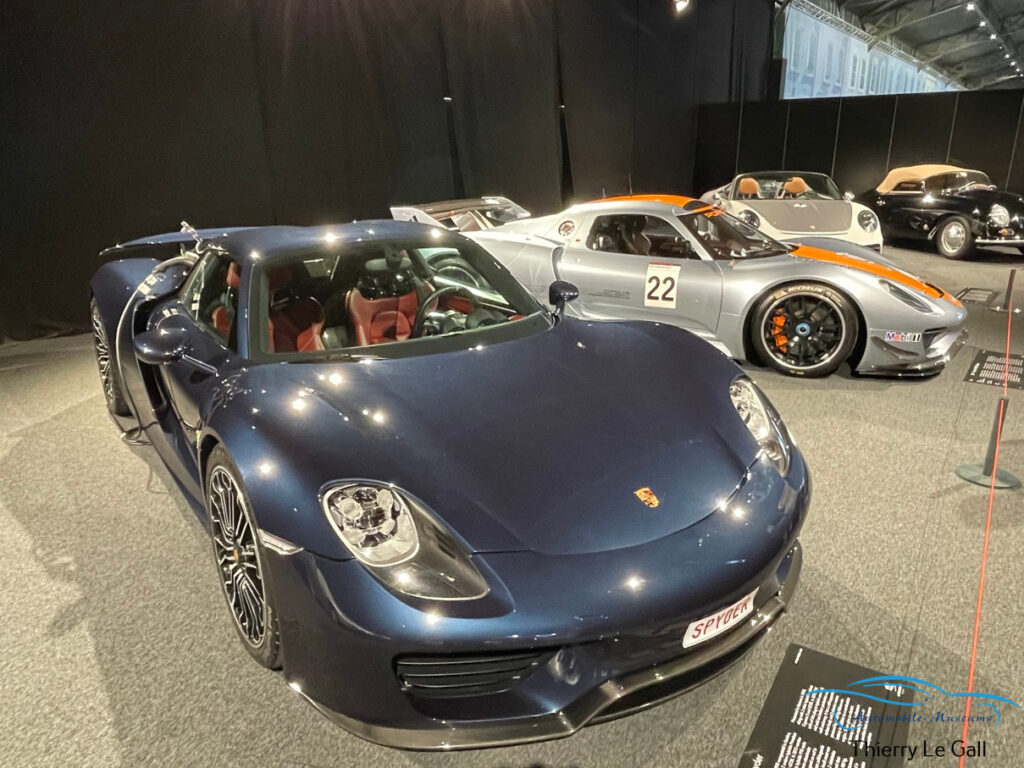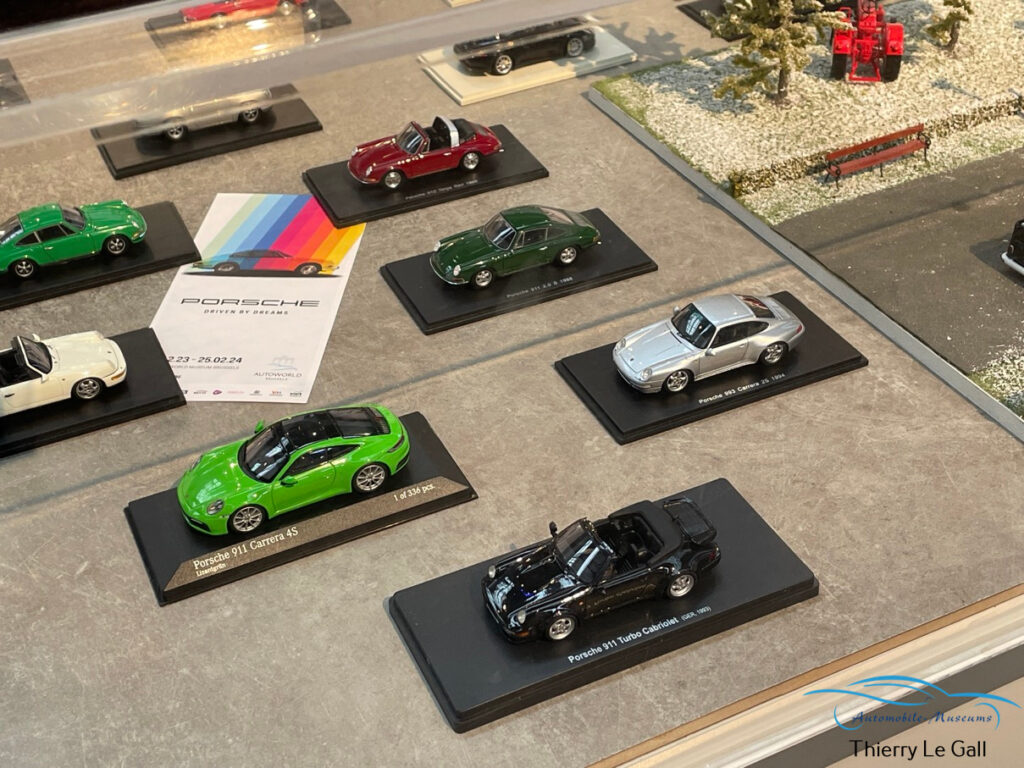Autoworld, Brussels, Belgium
Until February 25, 2024
Introduction
Porsche has been the dream of car enthusiasts for 75 years now, and the Stuttgart-based company has a special place in the hearts of fans around the world. With “Porsche, Driven by dreams“, Autoworld has decided to participate in this dream with an exceptional exhibition. Outside the museum, a Porsche 356 sets the tone with its multi-coloured paintwork. Leo Van Hoorick, curator of the Autoworld Museum, in collaboration with Porsche Belgium, the Porsche Museum in Stuttgart and several private collectors, has been able to assemble an unprecedented collection of exclusive Porsche. Thematically organized, Driven by Dreams explores the different facets of the Porsche universe. As great automotive stories are also stories of men and women, the exhibition focuses on the women and men behind the history of the brand, the creators, engineers, drivers or artists who bring the dream to life with numerous photos and information panels.






60th Anniversary of the 911
Double anniversary in 2023 for Porsche as the 911 also celebrates its 60th anniversary this year. The 911 therefore forms a theme in its own right within the exhibition, right when entering in the museum. Unlike many models in car production that claim long lines or large volumes because they retain their name from generation to generation, the 911 is one of the very few to have also retained its original line and spirit.
In an airy space, the different generations of the 911 are well showcased, especially since most of them are extreme or limited versions, and several of them are brightly coloured. From the 1968 911 E to the spectacular 2023 GT3 RS with its aero work worthy of a racing car and its orange gradient paint.
Among the rarities, the 2013 911 “50 years”, a special edition of 1963 units with styling elements reminiscent of the first 911, and even rarer a series of 75 cars made for the 75th birthday of the famous Belgian driver Jacky Ickx, only available in Belgium and signed by the driver.
On the mezzanine, a 1975 930 Turbo faces the 2023 Turbo S, which is much more civilized despite the power that has more than doubled to 650 hp. This collection, covering the 8 generations of the famous 911, allows us to measure both this continuity and the evolutions that have allowed this iconic model to remain one of the best sports cars in the world (the best according to the Porsche enthusiasts) over the decades.





Call from the Track
A specific area brings together 4 models of 911 intended for tracks, mud and sand and other extreme roads. First of all, the 911 Safari entered in 1978 in the East African Safari, then considered one of the toughest rallies in the world. The 2 cars entered finished in 2nd and 4th place, a feat considering that only 13 cars finished out of the 72 entered. A few years later, Porsche entered the Paris-Dakar in 1984 with a modified Carrera, but it was the 1986 959 that was remembered, achieving the double at the finish. The car on display is that of Jacky Ickx who finished 2nd, mechanically restored by the teams of the Porsche Museum, but whose bodywork has remained as it was on finish line.
In 2012, Porsche studied a 911 rally car, a rolling prototype that would not be unveiled until 2020 under the name 911 Vision Safari. This 911 will eventually give birth to the special edition (2500 units) 911 Dakar presented in 2023, available as an option in a “Roughroads” livery reminiscent of the one used in the race. These 4 cars are presented on a stand whose floor is reminiscent of sand and against a background of large desert photos.



Unseen: from Concept to Model
Each Porsche model starts with a concept, a study in style and technique. Some of them have been exhibited at trade fairs, while others have remained secret in the design office. Autoworld has collected 9 concepts from the Porsche Museum that have never been exhibited in Belgium and presents them alongside corresponding series production models. Not necessarily the model directly from the concept, but a production car that identifies with the concept presented. Thus, the 984 that gave birth to the Boxster sits alongside the 718 Spyder RS, the ultimate version of the petrol Boxster with its naturally aspirated 4L flat-6 and 420 horsepower. Among the curiosities, a Cayenne Convertible project, with 2 rear options, which did not come to fruition, Porsche preferring the Coupé version opposite.






The 989 is the only prototype of this first attempt at a 4-door sedan. In a very large format photo, the 960 explored a different path, in a style reminiscent of the Carrera GT. The 928 that was supposed to replace the 911 in the minds of Porsche’s executives (but the market decided otherwise) gave birth to a convertible study that was never finalized.




Another legendary duo, the 1983 Group B study for rally homologation was not finalized, as the category was abolished by the FIA for safety reasons. But it gave birth to the 959, often considered the first supercar, itself the origin of the 959 which won the Paris Dakar Rally-Raid in 1986.
Heritage
75 years ago, Ferdinand Porsche fulfilled his absolute dream with the 356 by building his own sports car. This 356 already laid the foundations of the Porsche sports car, with many technical and stylistic features that would later be found on the 911, then partly on the Boxsters and Cayman: flat engine at the rear, fastback line, plunging bonnet… The 356 “Gmund” on display is one of 44 built entirely of aluminum in a barn in the village of the same name in Austria, before moving to Stuttgart. D’Ieteren is a well-known Belgian coachbuilder, also a distributor of many brands on the Belgian market. Just over 700 examples of the 356 B Roadsters were produced in Belgium, including the 1962 BT6 on display. Porsche also collaborated with Carlo Abarth to develop and produce around 20 lighter and more powerful Carrera 356 for competition.





A 1961 718 Spyder version that raced in Canada has been fully restored, but its owner decided not to paint it in order to highlight its all-polished aluminum bodywork. The Belgian gendarmerie drove Porsche in the 1970s, as shown with a 911 Targa. In 1976, 20 cars were ordered, with the particularity of having the powerful 210 hp Carrera RS engine. Today, only 2 units remain of this fleet.





Curiosity, a shooting break based on a Porsche 924 developed by a German coachbuilder, 9 units built. The Carrera GT (2004) is displayed as if in a model box, marked 1:1 scale.






Motorsport
It’s difficult with a brand like Porsche, which has accumulated so many victories on all terrains, to select a dozen models to exhibit! 3 icons to start with, with a 917 from 1970, winner of the 1971 12 Hours of Sebring with Larrousse/Elford, a 962 from 1987 (chassis transformed by Kremer with carbon shell) and a 1997 GT1 Evo.
Then, a quartet of 911s illustrates the versatility and long history of the car in competition, from a 1973 Carrera 2.8 RSR in rallying to the 911 GT3 Cup Type 992, including the 2018 RSR decorated as the 917 “Pink Pig” from 1971, and winner of its class at the 2018 24 Hours of Le Mans.






More recent, 2 models (full size) of the 963 LMDh (Le Mans Daytona hybrid) from 2022 and the 99x Formula E (electric) and the 919 Hybrid winner of the 2016 24 Hours of Le Mans. The latter remained as it was at the finish, with all the marks of a 24-hour race.





Art
When you’re an icon, you’re bound to attract artists, and “Porsche, Driven by Dreams” logically wanted to add art to dream cars. A 1966 911 is “dressed” with an artwork by the painter Bart Verheyen in a pop art comic book style. The famous Belgian street artist Vexx is exhibiting his Porsche Vision Gran Turismo until January 8, 2024. Another artist, photographer Bart Kuykens, exhibits numerous B&W shots, in which the Porsche 911 invariably plays an important role.




Kids Corner
An area is provided for the youngest visitors with a workshop where they can build the Porsche of their dreams using Lego bricks. To inspire them, a Porsche GT3 full scale is on display, the left half is a real body while the other half is built in Lego, perfectly matching in terms of decoration!


The Permanent Collection
During the three months of the “Porsche, Driven by Dreams” exhibition, Autoworld’s permanent collection will of course remain on display, in which you can discover more than ten other Porsche models.





The museum shop is also up to Porsche time, with a large collection of miniature Porsche, ideal for end-of-year gifts.





Conclusion
With about sixty cars (plus those from the permanent collection), Driven by Dreams at Autoworld allows you to explore the world of Porsche and discover exceptional models that we don’t commonly see. It is also a good opportunity to visit Autoworld, which exhibits about 160 cars from the end of the 19th century to the 1980s in a historic building.
The photos on this page belong to the Automobile Museums, no right of reproduction without the owner’s express permission.

